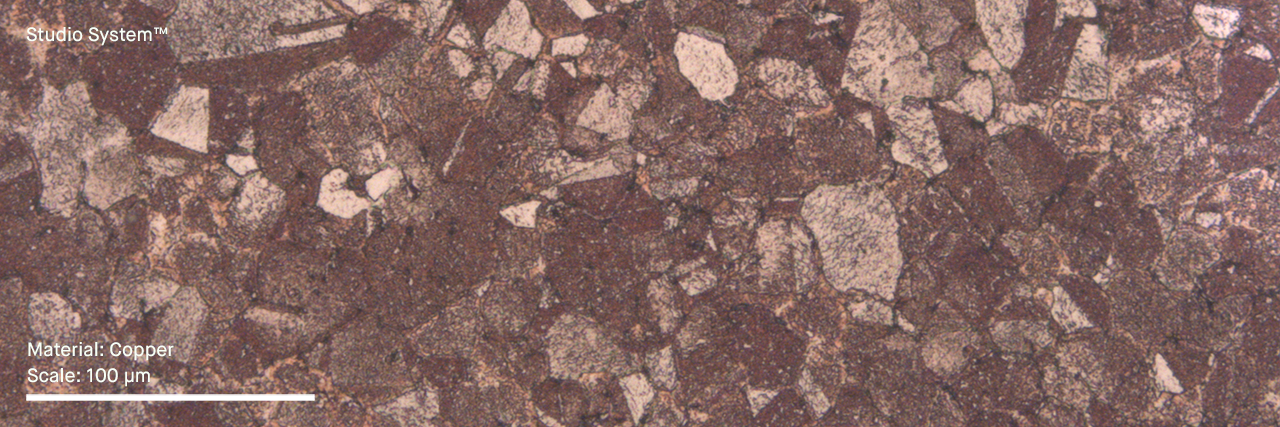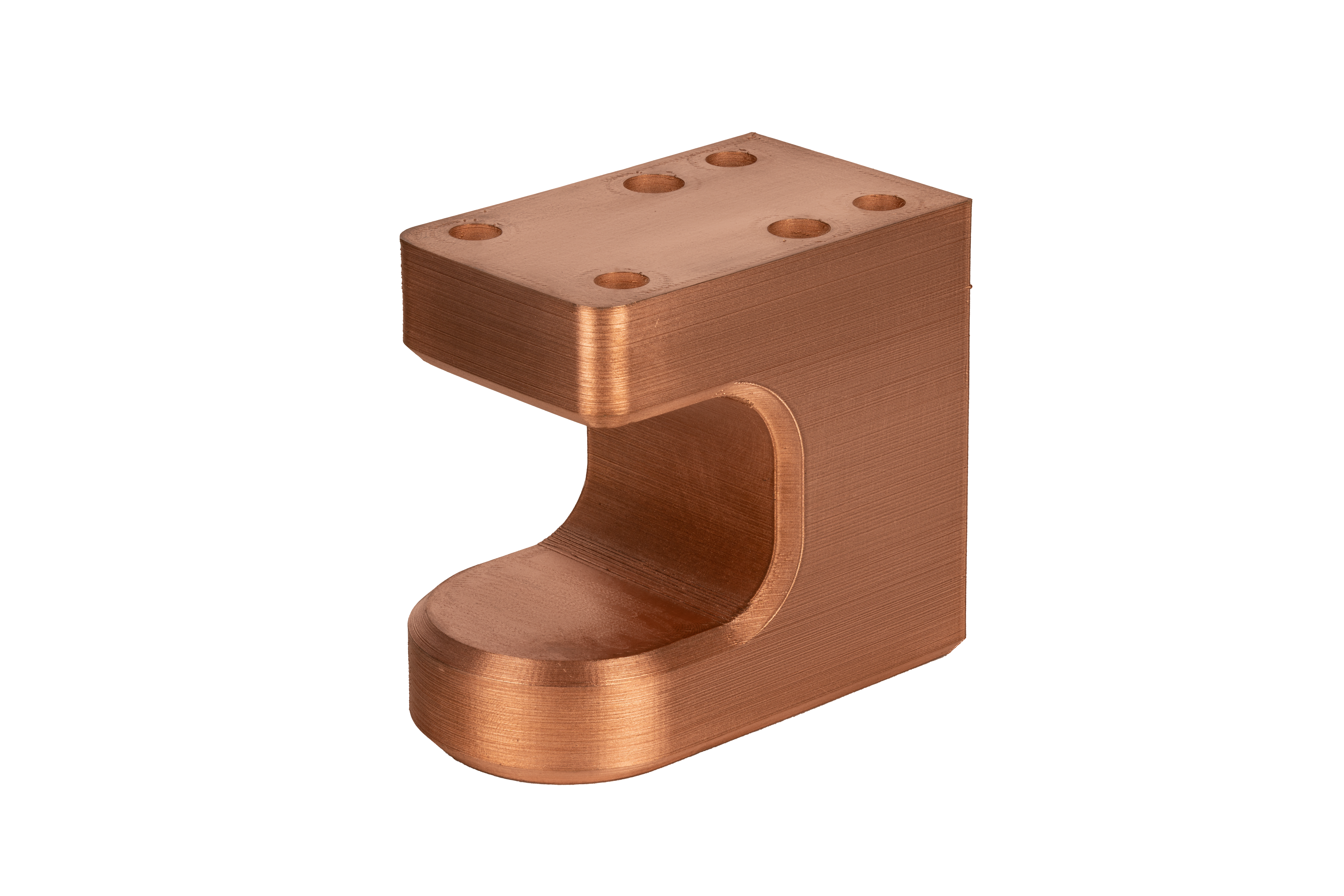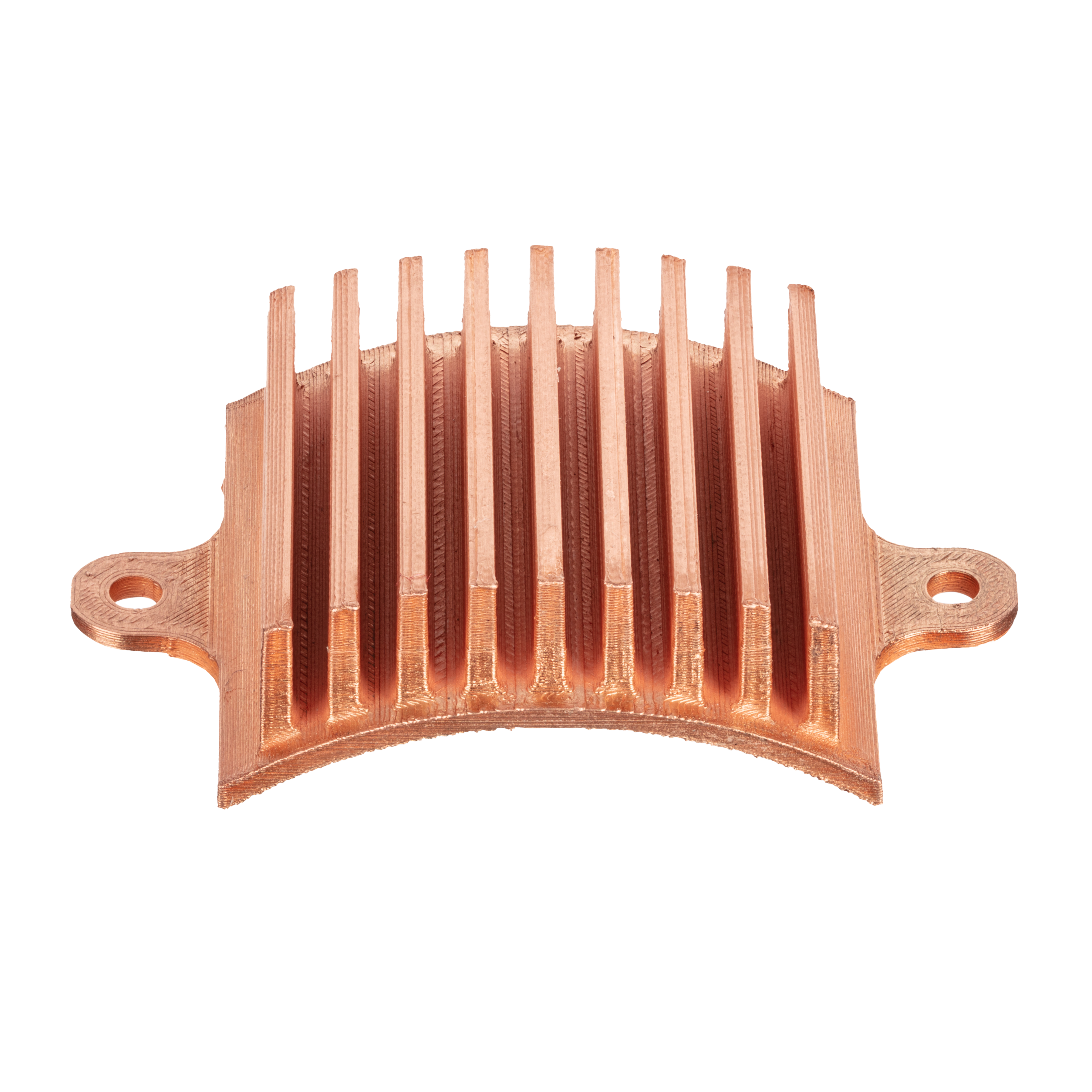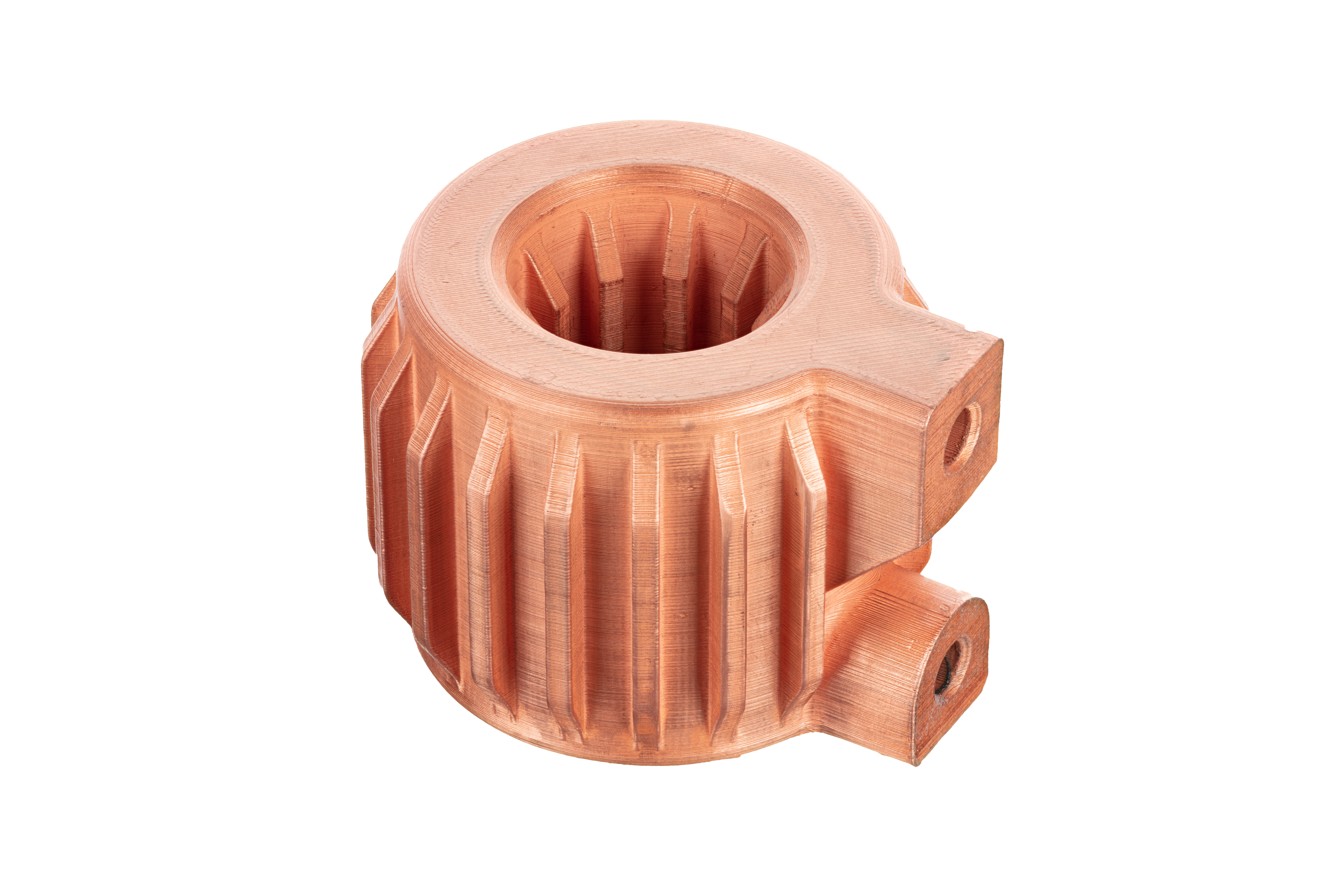Copper

About Copper
With its excellent thermal and electrical conductivity, copper is the ideal material for transferring heat or electricity. For that reason, it is used in virtually every electronic device made, as well as in many of the heat exchangers used in the oil and gas, automotive, and consumer industries, as well as others.
Parts that are typically produced in copper:
- Heat Exchangers
- Bus Bars
- Inductor Coils
- Resistance Welding tools
- Electrical Motor and Generator components
BMD + Cu
Copper printed on the Desktop Metal Studio System is pure copper. Unlike laser-based processes such as DMLS, which often print chromium zirconium copper (CuCr1Zr), bound metal deposition (BMD) is able to print pure copper, unlocking the full benefits of the material. This enables for a thermal and electrical conductivity that you would expect from a pure copper.
Copper printed on the Studio System has an IACS* value of 85.2% making it a superior material choice for 3D printing conductive components.
*IACS is the International Annealed Copper Standard - a measurement of how conductive a specific copper is compared to pure annealed wrought copper.
Similarly to electricity, copper is also a superb conductor of heat (Copper has the third highest thermal conductivity of all materials, behind just Silver and Diamond which generally are not economically viable material choices). This excellent thermal conductivity makes it an excellent material choice for parts that require the transfer of heat such as heat exchangers.
Using the BMD process, users can quickly fabricate a wide variety of end-use parts. Printing parts in copper is an ideal alternative to machining, which can be prohibitively expensive as copper’s extreme ductility and cold workability leads to high tool wear and slow cutting rates. Printing with the Studio System also allows for new high-performance designs - like the incorporation of lattice structures or conformal cooling channels to improve heat transfer - that are not possible with traditional manufacturing.

EGAR Electrode Holder
About the part
This electrode holder is used to hold electrodes in position during resistive nut welding. Copper was essential for this part due to its ideal electrical and thermal conductivity properties. To further improve temperature regulation, the part features internal conformal cooling channels.
Why Print?
Electrodes are consumable and need to be replaced quickly and affordably when they wear out to keep the manufacturing line up and running. Printing allows for the rapid fabrication of copper components like this electrode holder with ideal electrical and thermal conductivity properties.
By adding conformal cooling channels the temperature of the electrode can be regulated (brought back down) more quickly. This not only produces a better weld but reduces wear on the electrode. These conformal cooling channels can only be created via additive manufacturing.

Motor heat sink
About the Part
This heat exchanger is designed to help dissipate heat from an electric motor.
Why Print?
This part attaches to an electric motor to help dissipate heat while the motor operates, keeping the motor at a more ideal operating temperature. The Studio System allows for the heat exchanger to perfectly conform to the motor shape, allowing heat to more efficiently move into the heat exchanger. Machining the tall, thin fins is challenging due to chattering as the fins are cut - printing allows for their manufacturing with ease.

Helical heat exchanger
About the Part
This is a heat exchanger used in chemical processing that features a helical internal cooling channel.
Why Print?
This heat exchanger is used to cool a hot gas as it flows through a pipe. The Studio System allows for the heat exchanger to be printed with an internal helical channel that allows cooling fluid to flow through it. The complex geometry of that channel can only be made with additive manufacturing. When combined with the external fins, this heat exchanger enables a much higher heat transfer rate than the traditional heat exchanger.

Bus Bar
About the Part
This bus bar is used for local high current power distribution. Since it gets hot while in use, the bus bar features internal conformal cooling passages.
Why Print?
This bus bar design features complex cooling channels running throughout its core. If manufactured via traditional methods, those channels would require a multi-part assembly to create the final part. Using the Studio System, the bus bar can easily be printed as a single copper part - complete with internal cooling features - in just a few days.